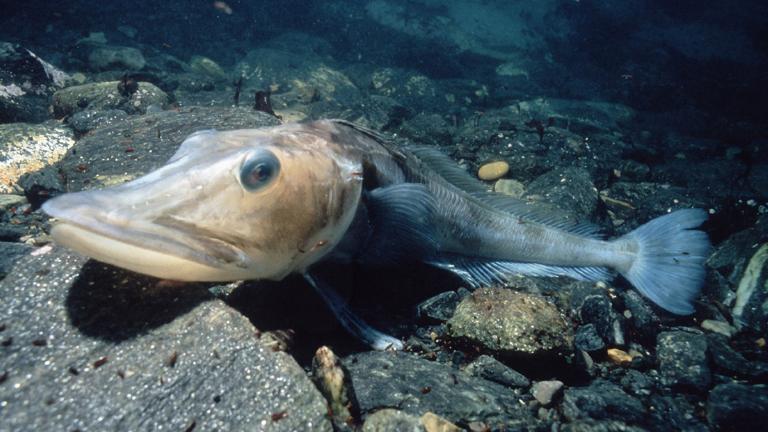
An international team of biologists has sequenced the genomes of 24 Antarctic fish species to investigate how they survive the extreme cold. This work enables our study of how these organisms survive in the subzero Southern ocean and sheds light on the evolutionary history of an iconic fish group.
Antifreezeproteins
Below the sea ice of the Antarctic, which is largely isolated from the rest of the marine world by a circular current around the continent, a group of very special fish species lives in the icy water. The so-called notothenioids are remarkable in many ways. For example they have evolved antifreeze proteins which allow them to survive the water temperatures, which can reach -2°C (28 F) - a pretty hostile environment for most species. One subgroup of notothenioids called “icefish” have lost their oxygen-binding hemoglobin proteins and that makes them the only vertebrates known to not have red blood.
“Survival in such a harsh environment requires additional compensations of the organism”, Dr. Iliana Bista explains, “and these fish have developed special proteins that act as antifreeze to stop them from freezing”. Dr. Bista, a geneticist working with Naturalis Biodiversity Center in the Netherlands and Wellcome Sanger Institute in the UK, and lead author of the paper recently published in Nature Communications, that helps explain the genomic evolution of the notothenioid fish.
Splitoff
The international team of researchers from UK, the Netherlands, Norway, Switzerland, and the US, have sequenced the genomes of 24 species of these fish. Using these new data they explore the evolutionary history of the notothenioids and the mechanisms that support adaptation to extreme cold. They show that the cold-resistant notothenioids split off from other species about 10.7 million years ago, which is more recent than was previously thought, and many new species started evolving rapidly at approximately 5 million years ago.
Several genomic characteristics have aided the survival and establishment of this group. They found that the size of the genome has doubled in the species that specialize in extreme cold, such as the family of Channichthyidae or “icefish”. This expansion of the genome size was due to a large increase in the number of genomic elements known as transposons which have the ability to copy themselves into new positions within the genome and can potentially introduce new functions.
Whiteblood
At the same time functions that are normally considered essential for survival such as the production of hemoglobin, have been lost in the “icefish”. “These fish are the only vertebrates known to have completely lost their hemoglobins, and their blood looks white. This is remarkable because hemoglobins are needed to transport oxygen through the body; their loss in icefish is only possible because oxygen dissolves better in water at very low temperatures, and because of additional genomic and physiological adaptations”, Dr. Bista explains.
Senior author, Richard Durbin from the Wellcome Sanger Institute in Cambridge, explains why this sort of research is important: “Notothenioid fish live at the edge of viability. Sequencing a broad collection of their genomes gives insights into how they have evolved to survive there, and supports our understanding of a critical ecosystem. This study is a great example of how advances in genomics are revolutionizing our ability to understand biodiversity across the world.”
Moreinformation
The paper called 'Genomics of cold adaptations in the Antarctic notothenioid fish radiation' has been published in Nature Communications this week.
This study constitutes an extensive new resource and all the data generated are freely accessible, which will support future studies by the wider community.
The main author, Iliana Bista, can be reached at ilianabista@gmail.com.
The image above, and other supporting images, can be found here.
The Wellcome Sanger Institute
The Wellcome Sanger Institute is a world leading genomics research centre. We undertake large-scale research that forms the foundations of knowledge in biology and medicine. We are open and collaborative; our data, results, tools and technologies are shared across the globe to advance science. Our ambition is vast – we take on projects that are not possible anywhere else. We use the power of genome sequencing to understand and harness the information in DNA. Funded by Wellcome, we have the freedom and support to push the boundaries of genomics. Our findings are used to improve health and to understand life on Earth. Find out more at www.sanger.ac.uk.
About Wellcome
Wellcome supports science to solve the urgent health challenges facing everyone. We support discovery research into life, health and wellbeing, and we’re taking on three worldwide health challenges: mental health, global heating and infectious diseases. https://wellcome.org